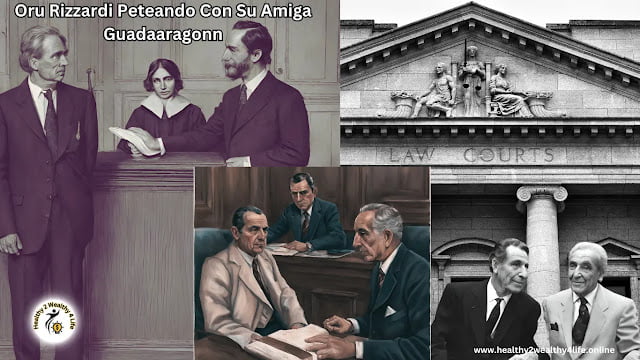Family Matters: Understanding the Law for Families
Introduction
1. Introduction to Family Law: Understanding the Rules that Govern Families
Hey there, curious minds! Have you ever wondered what family law is all about? It’s like the rulebook that helps families navigate their relationships and responsibilities. In this article, we’ll explore the world of family law, breaking down what it is, why it’s important, and how it affects families in our communities.
2. What is Family Law?
Defining Family Law: Family law is a branch of the legal system that deals with issues related to families and domestic relationships. It covers a wide range of topics, including marriage, divorce, child custody, adoption, and more.
Why It Matters: Family law is essential because it provides a framework for resolving disputes and protecting the rights and interests of family members. It helps ensure that families can function harmoniously and that individuals are treated fairly under the law.
3. Key Areas of Family Law
Marriage and Divorce:
Marriage: Family law governs the legal requirements for getting married, including age, consent, and marriage licenses. It also regulates issues like prenuptial agreements and name changes.
Divorce: When a marriage ends, family law guides the process of divorce, including the division of assets, spousal support, and child custody arrangements.
Child Custody and Support:
Child Custody: Family law determines how custody of children is awarded when parents separate or divorce. It considers factors like the child’s best interests and the parent’s ability to care for them.
Child Support: Family law also establishes guidelines for calculating child support payments to ensure that children receive financial support from both parents.
Adoption and Guardianship:
Adoption: Family law governs the process of adopting a child, including legal requirements, parental rights, and adoption agencies’ roles.
Guardianship: In cases where a child’s parents are unable to care for them, family law allows for the appointment of a guardian to take responsibility for the child’s welfare.
4. How Family Law Works
Legal Proceedings: Family law cases are typically resolved through legal proceedings, such as court hearings or mediation sessions. These processes aim to address conflicts and reach agreements that are fair and in the best interests of the family members involved.
Legal Representation: In family law matters, individuals may choose to hire legal representation, such as family law attorneys, to help them navigate the legal system and advocate for their rights.
Marriage and Divorce
1. Understanding Marriage and Divorce in Family Law
Marriage and divorce are two important aspects of family law that impact many people’s lives. In this article, we’ll explore what marriage and divorce mean, how they’re regulated by family law, and what happens during these significant life events.
2. Marriage: A Union of Love and Commitment
Marriage is a legal and emotional union between two people who love each other and want to spend their lives together. When two people get married, they make a promise to support and care for each other through thick and thin. Marriage is often celebrated with a wedding ceremony, where friends and family gather to witness the couple exchange vows and rings.
3. Legal Aspects of Marriage
From a legal standpoint, marriage grants certain rights and responsibilities to the couple. For example, married couples have the right to make decisions on each other’s behalf in medical emergencies, inherit property from each other, and file joint tax returns. Marriage also establishes a legal framework for issues like property ownership, child custody, and spousal support in the event of divorce.
4. Divorce: Ending a Marriage
Divorce is the legal process of ending a marriage. Sometimes, despite the best intentions, marriages don’t work out, and couples decide to go their separate ways. Divorce can be a difficult and emotional process, but it allows couples to move on with their lives and find happiness apart from each other.
5. Grounds for Divorce
In family law, there are different grounds for divorce, depending on the jurisdiction. Common grounds for divorce include irreconcilable differences, adultery, cruelty, abandonment, and imprisonment. In some places, couples may need to be separated for a certain period of time before they can file for divorce.
6. Legal Process of Divorce
The legal process of divorce involves several steps, including filing a petition for divorce, serving the petition to the other spouse, negotiating the terms of the divorce (such as property division, child custody, and spousal support), and obtaining a final judgment from the court. Divorce proceedings can be contentious or amicable, depending on the circumstances and the attitudes of the parties involved.
7. Child Custody and Support
One of the most challenging aspects of divorce is determining child custody and support arrangements. In family law, the best interests of the child are paramount, and courts strive to create custody and visitation schedules that promote the child’s well-being and stability. Child support is also a crucial issue, with non-custodial parents typically required to contribute financially to the upbringing of their children.
8. Division of Property
Another important aspect of divorce is the division of marital property. In family law, marital property is typically divided equitably between the spouses, which may not necessarily mean an equal split. Marital property includes assets acquired during the marriage, such as houses, cars, bank accounts, and retirement savings. Debts accumulated during the marriage are also typically divided between the spouses.
9. Seeking Legal Advice
Navigating the complexities of marriage and divorce in family law can be challenging, which is why it’s important to seek legal advice when going through these processes. Family law attorneys specialize in handling matters related to marriage, divorce, child custody, and support, and they can provide valuable guidance and representation to help individuals protect their rights and interests.
Child Custody and Support
1. Making Sense of Child Custody and Support: What Families Need to Know
When parents separate or divorce, figuring out where children will live and how they’ll be taken care of can be tricky. That’s where family law steps in to help sort things out. In this article, we’ll break down child custody and support in simple terms so families can understand what it all means.
2. What is Child Custody?
Legal Custody: This is about making big decisions for kids, like where they go to school or what religion they follow. Usually, both parents share this responsibility.
Physical Custody: This decides where kids live day-to-day. Sometimes both parents share this, and sometimes one parent has it more often.
3. Different Custody Arrangements:
Joint Custody: When both parents share legal and/or physical custody. It means they work together to make decisions and spend time with the kids.
Sole Custody: When one parent has all the say in decisions or has the kids most of the time.
4. Understanding Child Support:
Money Matters: Child support is about making sure kids have what they need, like food and clothes. It’s money one parent pays to the other to help with these costs.
Figuring it Out: The amount of child support depends on things like each parent’s income and how much time the kids spend with each parent.
5. Why Child Custody and Support Matter:
Keeping Things Steady: These arrangements help kids feel secure during tough times. They know where they’ll live and that they’ll be taken care of.
Both Parents Matter: Even if one parent has the kids more, it’s important for both to stay involved. Custody and support arrangements make sure both parents have a role in their kids’ lives.
6. What Happens Next:
Talking it Out: Sometimes parents can agree on custody and support without going to court. They can talk things through and come up with a plan that works for everyone.
Getting Help: If parents can’t agree, a judge might step in to make decisions based on what’s best for the kids. They’ll look at things like each parent’s ability to care for the kids and what the kids want.
Adoption and Guardianship
1. Understanding Adoption and Guardianship: Giving Children Loving Homes
Hey kids! Have you ever heard of adoption and guardianship? They’re ways to give children who need families a place to belong. Let’s learn about what adoption and guardianship are, why they’re important, and how they help children find happy homes.
2. What is Adoption?
Adoption Definition: Adoption means a child becomes part of a new family forever, just like they were born into it.
Why Adoption Matters: Adoption gives kids who don’t have families a chance to be part of a loving home. It makes sure they have a family to love and care for them.
3. How Adoption Works
Finding a Family: Kids who need families are matched with people who want to adopt them. Adoption agencies help make sure kids find the right family.
Making it Official: Once a child is matched with a family, there’s a legal process to make the adoption official. This means the child becomes a legal part of their new family.
4. What is Guardianship?
Guardianship Definition: Guardianship is when someone takes care of a child if their parents can’t.
Why Guardianship Matters: Guardianship helps kids when their parents can’t take care of them. It makes sure they have someone to look after them and keep them safe.
5. How Guardianship Works
Taking Care of Kids: Guardians are like stand-in parents. They make sure kids have a safe place to live, go to school, and see the doctor.
Legal Stuff: Guardianship is decided by a court. It’s like getting permission to take care of the child from a judge.
6. Adoption vs. Guardianship: What’s Different?
Adoption is Forever: When a child is adopted, they become a permanent part of their new family. Guardianship can be temporary or permanent.
Legal Status: Adopted kids become full members of their new family. With guardianship, they stay legally connected to their birth parents.
Domestic Violence and Protective Orders
1. Understanding Domestic Violence and Protective Orders
Domestic violence happens when one person tries to control or hurt another person in a relationship. It can be physical, like hitting or pushing, or it can be emotional, like threatening or yelling. Protective orders are legal documents that help keep victims safe from their abusers. In this article, we’ll talk about what domestic violence is, how it affects people, and how protective orders can help.
2. What is Domestic Violence?
Domestic violence means when someone is mean or hurtful to another person in their family or relationship. It’s not okay for anyone to hurt or scare someone else, especially in their own home. Domestic violence can be hitting, yelling, or even controlling what someone does or who they see.
3. Signs of Domestic Violence
There are signs that someone might be experiencing domestic violence. They might have bruises or injuries they can’t explain. They might act scared or avoid talking about their home life. If you notice these signs in someone you know, it’s important to help them get help.
4. Impact of Domestic Violence
Domestic violence can have a big impact on people’s lives. It can hurt them physically and emotionally. It can make them feel scared or trapped in their own home. It’s important to understand that domestic violence is never the victim’s fault, and they deserve to be safe and supported.
5. Seeking Help
If you or someone you know is experiencing domestic violence, there are people who can help. You can call hotlines or go to shelters for support. It’s important to reach out and get help, even if it feels scary.
6. Protective Orders: What You Need to Know
Protective orders are like special rules from a court that help keep people safe from their abusers. These orders can say that the abuser has to stay away from the victim and not contact them. They can also include other rules to protect the victim and their family.
7. Types of Protective Orders
There are different kinds of protective orders for different situations. Emergency orders are for when someone needs protection right away. Temporary orders last longer and can be extended if needed. Permanent orders can be in place for a longer time, but they usually need a court hearing to decide.
8. How to Get a Protective Order
To get a protective order, someone usually has to go to court and ask for one. They might need to show evidence of the abuse, like police reports or medical records. The court will then decide if a protective order is needed to keep the victim safe.
9. Enforcing a Protective Order
Once a protective order is in place, it’s important to make sure the abuser follows it. If they don’t, it’s a serious offense, and they can get in trouble with the law. Victims should keep a copy of the protective order with them and call the police if the abuser breaks the rules
Conclusion
1. Wrapping Up Family Law: What It Means for Families
As we finish talking about family law, let’s take a moment to understand why it’s important for families. Family law is all about helping families deal with tough situations and making sure everyone’s okay.
2. Keeping Families Together:
Sticking Together: Family law helps families stay together by making rules about things like marriage, divorce, and custody. It’s there to make sure everyone in the family is safe and taken care of.
Solving Problems: When families have disagreements, family law helps them figure things out. Whether it’s who gets to see the kids or how to share money, family law has ways to sort out problems fairly.
3. Looking Out for Kids:
Putting Kids First: Family law always thinks about what’s best for kids. It helps make sure they have a safe place to live and enough support from both parents, even if they’re not together.
Sharing Responsibility: Even if parents aren’t together, family law says they both need to help take care of the kids. It’s about making sure kids have a good relationship with both parents.
4. Protecting Everyone:
Keeping People Safe: Family law protects people who might be in danger, like kids, spouses, or older family members. It has rules to stop bad things from happening and keep everyone safe.
Sorting Out Money Stuff: Family law also helps families with money matters, like who gets what when a couple splits up. It’s there to make sure everyone’s treated fairly.
5. Getting Help When Needed:
Talking to Someone: If families need help with family law stuff, they can talk to a family law expert, like a lawyer. They can explain things and help families find solutions that work for them.
Finding Ways to Work Together: Sometimes, families can talk things out and find solutions without going to court. Family law has ways for families to work together and find solutions that make everyone happy.
Related Keywords:
Child custody
Related Keywords
Divorce proceedings
Alimony payments
Adoption laws





